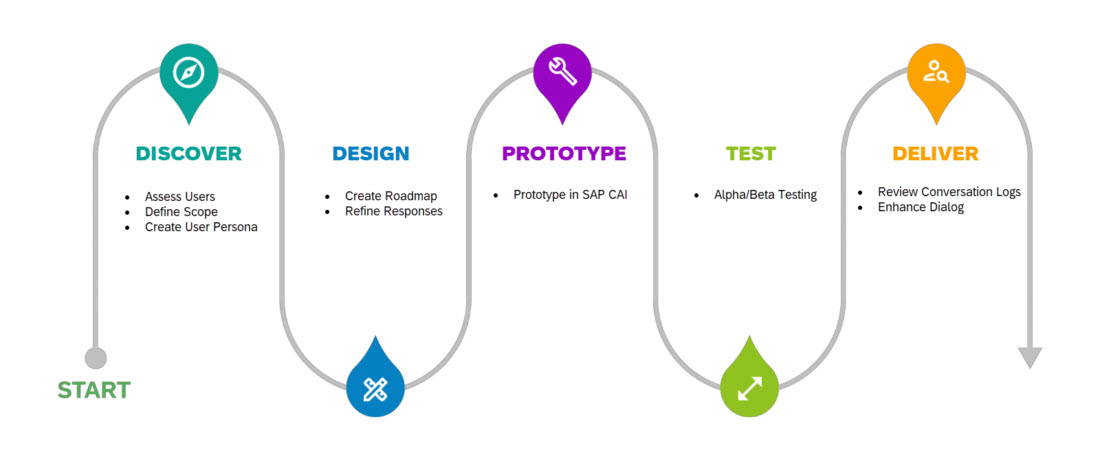Design Process Overview
For a quick course on Design Thinking, check out Design Thinking in a Nutshell on openSAP.
Design Thinking Process
When you are developing conversational experience design, you should follow the Design Thinking Process. Design Thinking is a user-centered, collaborative, problem-solving approach to design that includes various iterative stages.
CxD Stages
Each stage has some resources that can help you in your process. The CxD design process for creating your digital assistant includes these stages:








